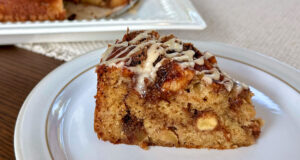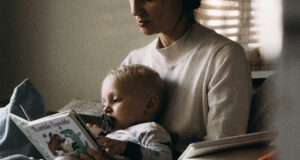Downton Abbey: The Grand Finale — A last waltz between the old and the new.
Published on September 18, 2025
There is something magical about stepping back into the world of Downton Abbey. The moment the first sweeping shot of Highclere Castle fills the screen, we are transported, not simply to a house or an estate, but to a state of mind. For years, Downton has captivated audiences not through explosive action or fast-paced thrills, but through its artistry. Its beauty lies in the details: the costumes that tell stories without words, the cinematography that treats the estate as a living character, and the unshakable values at the heart of the Crawley family.
The Grand Finale continues in this tradition, even as its writing stumbles. What it may lack in narrative strength, it compensates for with artistry. As a cinematic experience, the film is lavish, immersive, and breathtaking. It reminds us why Downton Abbey became more than just a series; it became a cultural touchstone, a reminder that beauty, tradition, and virtue still hold meaning in a chaotic world.
Cinematography: A love letter to place
One of the film’s greatest triumphs is its cinematography. From the opening frame, it is clear that director Simon Curtis and his team approached The Grand Finale not as a period drama alone, but as a visual poem. The house, once again, is not just a setting; it is a character, and perhaps the most enduring one of all.
Sweeping aerial shots showcase Highclere Castle in golden light, a vision of permanence against the backdrop of modern uncertainty. The symmetry of its architecture, framed by rolling English countryside, evokes order and continuity. Inside, the camera lingers lovingly on details: the glint of crystal in a chandelier, the gleam of polished silver, the play of firelight across velvet drapes. These choices are not accidental; they are a deliberate reminder of the aesthetic richness of a bygone world. A Downton classic.
The cinematography excels in its contrasts as well. Quiet shots of the servants’ quarters, with their earthy tones and practical simplicity, balance the grandeur of the upstairs rooms. There is beauty in the modesty, a visual affirmation that dignity exists at every level of the house. Each frame feels like a painting, carefully composed to capture both scale and intimacy.
Fashion as character development
Costume design has always been one of Downton Abbey’s hallmarks, and The Grand Finale is no exception. Fashion here does more than dazzle; it tells us who the characters are and where they are headed.
Lady Mary, now at the helm of the estate, dresses with a commanding elegance. Her wardrobe is less about flirtation and more about authority, with silhouettes that are sharp, fabrics that exude sophistication, and tones that suggest her duality as both leader and vulnerable woman. Her fashion signals that she is no longer playing the role of dutiful daughter or ambitious bride; she is the matriarch, and her clothes reflect that quiet power. Personally, I thought the red robe was a bit too much, but the point was clearly made.
Edith, on the other hand, wears softer lines, richer textures, and shades that suggest nurturing. It is remarkable to see her evolution expressed through fashion: once the overlooked sister, she now radiates warmth and authority of her own, not in competition with Mary, but in complement.
The supporting cast, too, receives attention. Cora’s wardrobe embodies understated refinement, while Isobel’s practicality is softened by fabrics that acknowledge her growing gentleness. Even the servants’ uniforms, pressed to perfection, communicate pride in service—a value often neglected in our own time.
Fashion, in this film, does what it has always done best in Downton Abbey: it blurs the line between art and anthropology. Every gown, every hat, every tailored suit is both beautiful and historically faithful, reminding us that clothing once carried meaning far deeper than trend.
The artistry of restraint
One of the most remarkable qualities of Downton Abbey has always been its restraint. Unlike modern dramas, which often overwhelm with spectacle or shock value, Downton builds its artistry through subtlety. The Grand Finale carries this same sensibility.
The film is peppered with quiet, almost still moments. Glances exchanged across a table, a hand resting briefly on another’s, the silence of a room heavy with memory. These artistic choices reflect the values the series has always championed: dignity, self-control, and the belief that what is unsaid often carries more weight than what is spoken.
This restraint extends to the pacing of the film. While some critics see the narrative as too slow, it may be more accurate to view it as meditative. The film takes its time, not in the name of drama, but in the name of savoring. In an age of hurried entertainment, something is refreshing about a story that invites you to linger.
The values of Downton Abbey
Beyond its artistry, what makes Downton Abbey enduringly appealing are its values. The Crawleys and their household are not perfect, but they embody principles that resonate deeply with audiences who hunger for meaning.
Duty and responsibility. From Robert to Mary, the weight of stewardship is central. Downton is not seen as mere property; it is a trust, something to be preserved and passed on. This sense of responsibility contrasts sharply with our culture’s disposability and individualism, offering instead a vision of legacy.
Family and loyalty. Despite betrayals, losses, and rivalries, family remains the bedrock of the story. In The Grand Finale, this theme is more visible than ever. The catty fights are gone; the sisters stand united, protecting each other with fierce love. Loyalty is no longer tested through division, but expressed through solidarity.
Tradition and change. Perhaps the most enduring theme of Downton Abbey has always been the delicate dance between tradition and progress. The Crawleys do not resist change blindly, but neither do they discard their heritage carelessly. They navigate the future with reverence for the past. In our current cultural climate, this balance feels especially resonant. We, too, are searching for ways to modernize without losing our roots.
Dignity in work. The servants of Downton, often overlooked in other narratives, are given equal dignity. Their labor is portrayed not as drudgery but as a vocation. This affirms that all roles, no matter how humble, contribute to the greater whole. In a world where many feel their work is undervalued, this message still matters.
The resonance with our culture today
Why does Downton Abbey still capture our imagination, even in its finale? The answer lies in what it offers that our modern culture often lacks: beauty, continuity, and values that transcend trends.
We live in an age where aesthetics are often shallow, where fashion is fast, and where stories are fragmented. Downton reminds us that artistry is worth time, that tradition can coexist with progress, and that the human heart is moved not by spectacle, but by integrity.
For women in particular, Downton has always provided complex models of femininity. Mary’s authority, Edith’s resilience, Cora’s grace, Violet’s wit. Each embodies a dimension of womanhood that refuses to be simplified. In a cultural moment where women are too often flattened into archetypes, these layered portrayals feel refreshing. In past films and especially in the series, there was often a strong clash among the women. It was Mary vs. Edith and Violet vs. Isobel, but in The Grand Finale, these relationships heal, and the girls finally have each other’s backs.
The film’s artistry—the costumes, the cinematography, the music—is not just decoration. They are embodiments of a worldview that insists beauty matters. They remind us that elegance is not frivolous; it is formative. To sit in a theater and watch Downton Abbey is to be reminded that beauty elevates, sustains, and teaches.
Weaknesses and farewell
Of course, the film is not without its weaknesses. The plot often feels secondary to the artistry, and some character choices seem inconsistent with their histories. Lord Grantham, in particular, feels oddly diminished, too quick to concede rather than wrestle with conviction as he once did. The writing lacks the sharpness that made earlier seasons unforgettable.
Yet, perhaps these flaws are forgivable in the context of a farewell. This is not a story designed to reinvent itself or shock us with twists. It is a final bow, a gentle curtain call, a chance to dwell in beauty one last time.
Final verdict
Downton Abbey: The Grand Finale may not be the sharpest chapter in the franchise, but it is one of the most beautiful. As a work of cinematography, fashion, and artistry, it succeeds in creating a sensory experience that feels like stepping into a memory. It is a love letter to tradition, to family, and to the values that make life meaningful.
For longtime fans, it is an emotional farewell. For newcomers, it may feel like a puzzle missing pieces of backstory. But for all who watch, it is a reminder that beauty and dignity are not relics of the past; they are timeless and essential.
As the credits rolled and the music swelled, I found myself thinking less about the weaknesses of the script and more about what Downton Abbey has given us: a vision of elegance, a respect for heritage, and a belief in the enduring strength of family. In a world too quick to discard the old for the new, Downton leaves us with a radical proposition: sometimes, the most modern thing we can do is to honor what has always mattered.The Grand Finale is less about what happens and more about what endures. And what endures, thanks to Downton Abbey, is the conviction that beauty, virtue, and tradition are worth treasuring.



